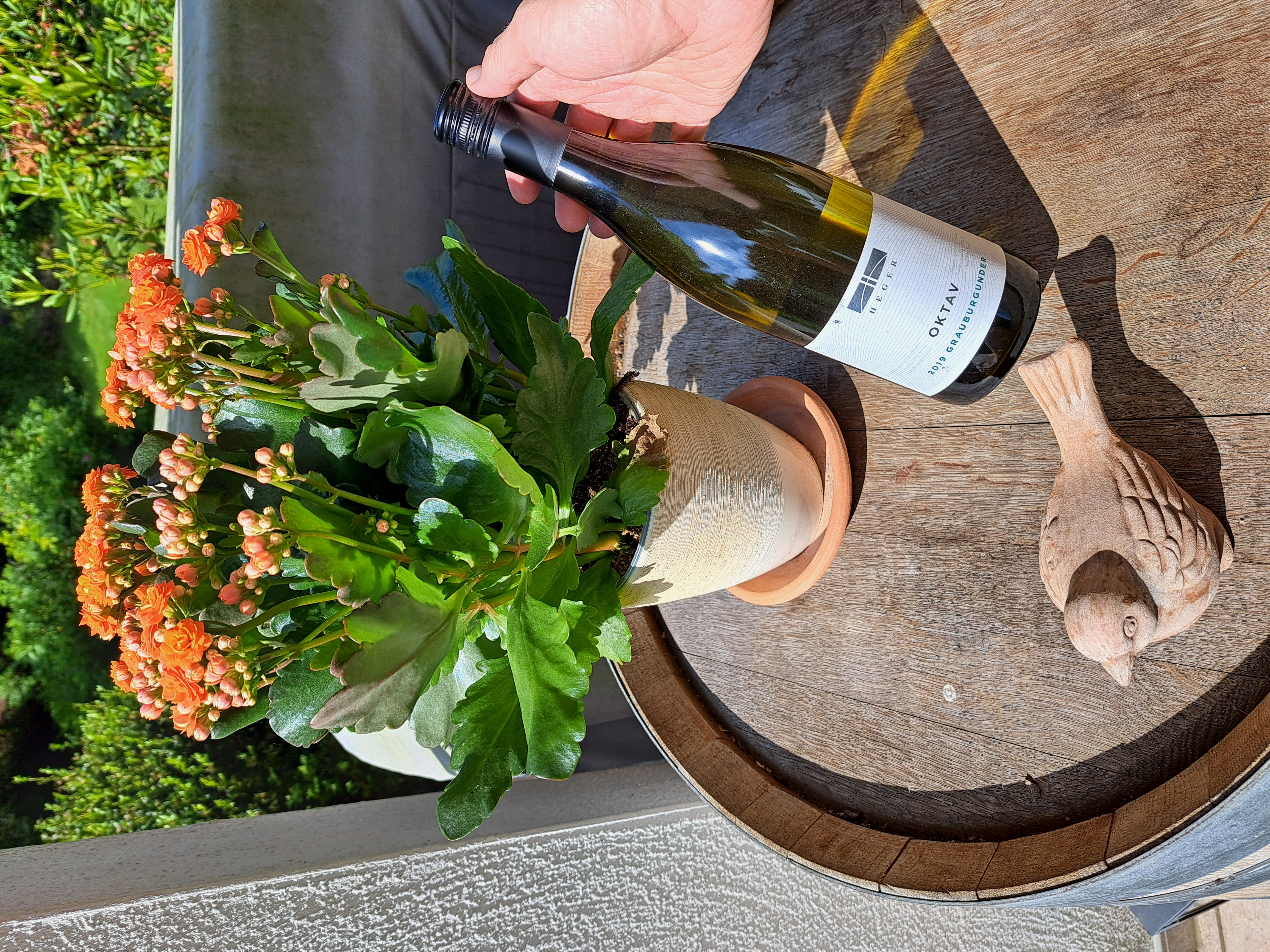2019 Dr. Heger Grauburgunder Oktav
Tasting note

Pale straw yellow. Soft and inviting on the nose: Ripe yellow fruits, candied lemon, cantaloupe melon, and some stone fruit, apples, pear. A tad buttery, too. Light-bodied in the mouth with a soft acidity. Mild lemons, ripe apples, pear, ever so slightly bitter at the end. Medium length finish. Still holding up. Surprisingly good!
Drink through 2024.
Tasted by Dominik Müller on Thursday, 30 May 2024.
Ratings
| Flawed? | no | |
| DM: |
7Wines with a DM5 to DM8 rating are good wines. They are pure and balanced. They also tend to show some character in the form of the typicity of the grape variety or the region. / 20 ("good") |
|
| Stars: |
3Wines with a rating of 3 stars are very well-made. They exceed expectations and are well above average within their peer group. / 5 |
Wine details
| Vintage: | 2019 |
| Colour: | white |
| Style: | still (dry) |
| Assemblage: | no |
| Grape variety: |
Pinot Gris Early flowering and early ripening white grape variety. Other names include Grauburgunder, Grauer Burgunder, Ruländer (Austria, Germany) and Pinot Grigio (Italy). The skin colour can vary, with shades ranging from grey, rusty red to a light brownish colour. Accordingly, depending on the length of extraction in the winemaking process, the wine can be white to yellow (little extraction) or even a little rosé (more extraction) in colour. In terms of aromatics and flavours, Pinot Gris can be fruity (apples, pear, mild citrus) to nutty or buttery. It is typically relatively low in acidity and can be higher in alcohol than many other white varieties - due to high sugar levels. This also makes Pinot Gris perfect for the production of off-dry or sweet wines. It can be medium to full-bodied and oily in texture, although there are good examples of lighter, fresh and more acidic whites produced from this variety, too. |
| For assemblages, the main grape variety is shown. | |
| Producer: | Dr. Heger |
| Country: | Germany |
| Region: |
Baden Baden is Germany's southernmost wine growing region. It stretches about 400 kilometers from north to south along the Rhine. Baden is also Germany's warmest wine region. Much like its French neighbour Alsace, its climate is heavily influenced by its location in between the Vosges and the Black Forest, shielding it from cold winds and heavy rains. Best-known for Burgundian varieties, especially Pinot Noir (Spätburgunder), Pinot Blanc (Weißburgunder) and Pinot Gris (Grauburgunder). More than 15,000 hectares of vineyards. Diverse soils, ranging from loess and volcanic stones in the Kaiserstuhl region to shell-limestone in Tauberfranken. |
| Subregion: | Kaiserstuhl |
| Appellation: | n/a |
| Vineyard: | n/a |
| More details on this wine. | |
| View this wine on CellarTracker. | |